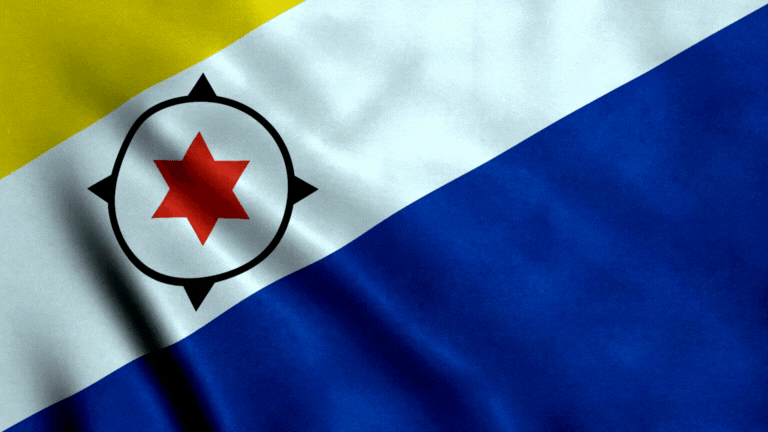Please be aware that this article may contain links to products and services we recommend. If you click on any of these links, we may earn a commission at no extra cost to you. We only endorse products and services that we believe will add value to our readers. Learn more here.
Bonaire Flag: History & Symbolism
Hack The Quiz
8/7/20243 min read
This article explores the history and symbolism of the Bonaire flag, highlighting Bonaire’s location in the Caribbean and explaining how the flag’s design represents the island’s natural beauty, seafaring tradition, and cultural diversity.
Where is Bonaire?
Bonaire is an island located in the southern Caribbean Sea, just off the coast of Venezuela. It forms part of the Caribbean Netherlands, along with the nearby islands of Sint Eustatius and Saba. Bonaire is renowned for its crystal-clear waters, coral reefs, and status as a premier diving destination. It is also known for its salt flats and flamingo populations.
In 2010, Bonaire became a special municipality of the Kingdom of the Netherlands, which means that it is directly governed by the Dutch government but retains some local autonomy. The flag, adopted in 1981, symbolizes Bonaire’s unique cultural identity, maritime heritage, and the natural beauty that draws visitors from around the world.
The History of the Bonaire Flag
The flag of Bonaire was officially adopted on December 11, 1981, following discussions about the need for a distinct symbol to represent the island and its people. The design was chosen to represent the island's diverse cultural heritage, seafaring traditions, and connection to nature.
The flag reflects Bonaire’s close relationship with the sea, its multicultural history, and its identity as a distinct entity within the Caribbean Netherlands. Its symbols and colors are designed to highlight the elements that are most significant to the island’s people and its past.
Breaking Down the Bonaire Flag’s Design
The Bonaire flag features three main colors—yellow, white, and blue—divided by a diagonal line, with a black compass and a red six-pointed star at the center. Each element of the flag carries significant meaning tied to Bonaire’s culture, history, and natural features.
Let’s break down the elements of the flag:
The Yellow Triangle
The yellow section of the flag represents the sun and the abundance of nature on Bonaire. It symbolizes the bright, sunny climate of the island and the beauty of its landscapes, from its beaches to its unique salt flats.
The Blue Triangle
The blue section represents the Caribbean Sea, which surrounds Bonaire. It highlights the importance of the ocean to the island’s culture, economy, and way of life, particularly its famous diving sites and rich marine biodiversity.
The White Band
The white band that runs diagonally across the flag symbolizes peace and freedom. It signifies the harmony that the people of Bonaire strive for and reflects the tranquil nature of the island.
The Black Compass
The black compass symbol in the center represents navigation and Bonaire’s long seafaring tradition. As an island, Bonaire has always relied on the sea for both survival and cultural exchange, and the compass points in all directions to symbolize its connection to the wider world.
The Red Six-Pointed Star
The red six-pointed star inside the compass represents the original six villages of Bonaire: Antriol, Nikiboko, North Saliña, Playa, Rincon, and Tera Korá. The star’s red color symbolizes the spirit and resilience of the Bonairean people.
Final Thoughts
The flag of Bonaire is a meaningful representation of the island’s unique identity, natural beauty, and seafaring tradition. The yellow and blue sections reflect the sunny landscape and the surrounding Caribbean Sea, while the white band symbolizes peace and harmony. The black compass and red six-pointed star pay homage to Bonaire’s cultural heritage, its seafaring past, and its vibrant community.
Since its adoption in 1981, the flag has served as a source of pride for the people of Bonaire, flown during important local events and used to celebrate the island’s heritage. It stands as a reminder of Bonaire’s identity as a welcoming Caribbean island with a strong connection to the ocean and its diverse cultural history.
Expand your mind ...
Explore trivia that broadens your understanding and knowledge of the world.
WE ARE HERE FOR YOU
JOIN US and hack the quiz
info@hackthequiz.com
© 2024. All rights reserved.



